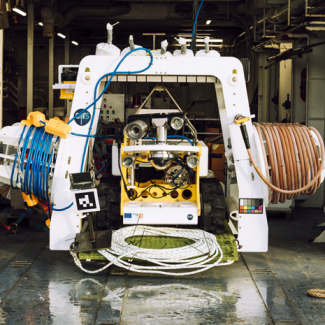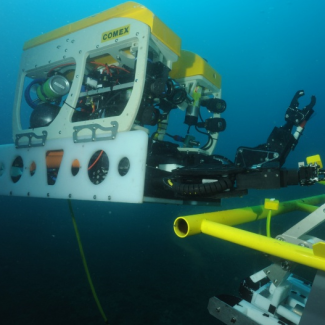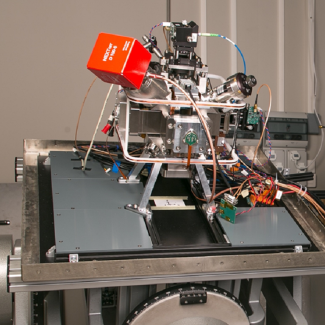
Safran, CNRS and École Polytechnique create joint laboratory for future electric space propulsion
The École Polytechnique engineering school, the French national scientific research center CNRS and Safran Electronics & Defense have signed a partnership agreement for a joint laboratory dedicated to the research and development of electric satellite thrusters. The new unit is called COMHET (laboratoire Commun pour l’étude des Hall Effect Thrusters) and will focus on improving HET technology.
The partnership builds on a long-standing collaboration between the three entities at the Plasma Physics Laboratory (CNRS/École Polytechnique, Institut Polytechnique de Paris/Sorbonne Université), which is world-renowned for its work in this field. COMHET will continue and strengthen this collaboration and will embark on crucial new fundamental research to exploit the potential of plasma technologies and their applications in space. The laboratory’s work will focus on three areas related to the physical characteristics of Hall-effect thrusters and the specific associated scientific and technological issues:
- Focus area 1 – Study of alternative propellants.
- Focus area 2 – Digital simulation.
- Focus area 3 – Smart diagnostics.
The objective is to improve thruster performance and reliability, especially in terms of stability and compatibility, by developing innovative technological building blocks to meet the challenges around future satellite thrusters. The COMHET teams will explore the use of a new propellant such as iodine to replace xenon, which is expensive, as well as the use of digital simulation and the development of non-intrusive diagnostics to reduce the duration and number of vacuum chamber tests.
Compared with chemical propulsion, which generates immediate and powerful thrust, but uses a lot of energy, electric propulsion offers lower thrust, but it is continuous and much more fuel-efficient. This solution also offers significant weight savings and makes it possible to launch spacecraft that are lighter and/or have greater payload capacity.
Safran Electronics & Defense, through its Safran Spacecraft Propulsion subsidiary, a pioneer in electric motors for satellites in Europe, is developing Hall-effect thrusters in France. HET thrusters use an electric and magnetic field to create a plasma from a gaseous propellant. Plasma ions are accelerated by the electric field and expelled to create thrust. Fundamental research into plasmas and their applications in space propulsion is also being conducted by laboratories at CNRS and the École Polytechnique.
The French Defense Innovation Agency (AID, part of the French Ministry of the Armed Forces) is supporting COMHET by subsidizing the ValidHETion project through the CIEDS Interdisciplinary Research Center for Defense and Security. This collaborative project is part of the joint laboratory’s focus areas 1 and 2, with the aim of validating digital tools by comparing them with measurements from experimental thrusters.
“After Xlim, COMHET is the second joint laboratory we’ve set up,” says Jean-Marie Bétermier, Space Director for Safran Electronics & Defense. “These partnerships with the academic community give us greater control over the sovereign technologies we develop.”
“CNRS is proud to be helping set up the COMHET joint laboratory,” says Jean-Luc Moullet, Deputy CEO for Innovation, CNRS. “This partnership will provide a structured, long-term framework for collaboration on the design of future space thrusters. It also strengthens our solid and prolific ties with Safran, a long-standing partner of CNRS. We created our first joint laboratory with Safran over 30 years ago.”
“We’re delighted with this new collaboration with Safran Spacecraft Propulsion and CNRS, which will further strengthen the already well-established influence and excellence of the research by our Plasma Physics Laboratory in the space sector,” says Laura Chaubard, Director General and acting President of École Polytechnique. “By helping create the COMHET joint laboratory, which will also benefit from AID’s support, École Polytechnique is reaffirming its mission to contribute to France’s scientific and technological sovereignty.

